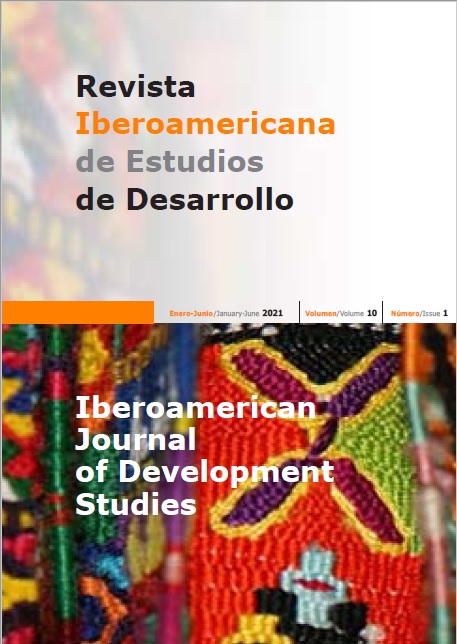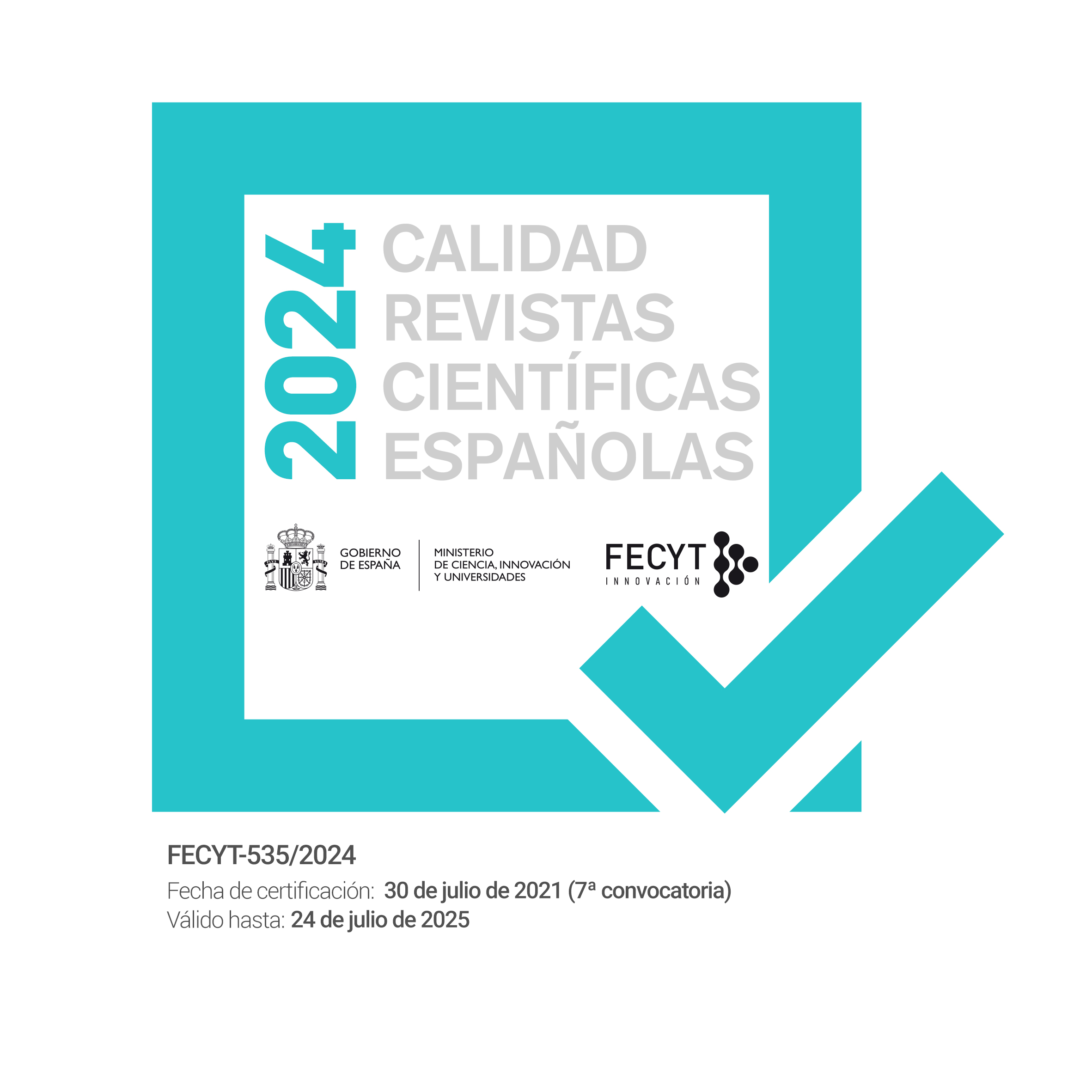Planning Befriends Women: A Look of a Gender Responsive City in the Colombian
Recipient of the II SEGIB-AECID Award in Research on Sustainable Development in Ibero-America
DOI:
https://doi.org/10.26754/ojs_ried/ijds.559Keywords:
gender responsive planning, local planning, gender equality-SDG 5, content analysis, ColombiaAbstract
Gender is considered the most universal form of inequality. Therefore, a just and sustainable development cannot, and should not, be conceived without gender equality (GE), as recognized by the 2030 Agenda for Sustainable Development. Several Latin American countries are making substantial progress in terms of critical aspects of GE. For Colombia, the path towards gender equality starts from nationwide mandatory laws to be implemented at the local level. In this study, it is used data collected for a Convergent Parallel Mixed Method to conduct a comprehensive assessment of efforts towards GE in Colombian municipalities. Data collected are employed from the municipal development plans (PDMs), cities’ websites, and archival material. In this paper, I mainly present the results of the qualitative phase that uses a Qualitative Content Analysis (QCA). Results indicate
that efforts towards GE in Colombian municipalities are portrayed through programs and initiatives to address the internationally recognized women’s agenda.
Downloads
References
BAER WC (1997). General plan evaluation criteria: An approach to making better plans. Journal of the American Planning Association 63(3):329-344.
BANCO MUNDIAL (2011). Informe sobre el desarrollo mundial 2012: Igualdad de género y desarrollo: Panorama general. Banco Mundial, Washington DC.
BEEDE DN, JULIAN TA, LANGDON D, MCKITTRICK G, KHAN B, DOMS ME (2011). Women in STEM: A gender gap to innovation. Economics and Statistics Administration Issue Brief:4-11.
BENJUMEA RUA AM, LOAIZA ZAPATA JA (2018). Violencia sexual contra mujeres de Tumaco Documentación y reflexión sobre los daños en mujeres racializadas [pdf]. Corporación Humanas ‒ Centro Regional de Derechos Humanos y Justicia de Género, Bogotá.
BERKE P, GODSCHALK D (2009). Searching for the good plan: A meta-analysis of plan quality studies. Journal of Planning Literature 23(3):227-240.
BLUMBERG RL (2005). Women’s Economic Empowerment as the Magic Potion of Development? In 100th Annual Meeting of the American Sociological Association, August, Philadelphia. http://citeseerx.ist.psu.edu/viewdoc/download?doi=10.1.1.499.7257&rep=rep1&type=pdf , access August 16, 2016.
BLUMENBERG E (1998). Gender Equity Planning: Inserting Women into Local Economic Development. Journal of Planning Literature 13(2):131-146.
BOCK BB (2015). Gender mainstreaming and rural development policy; the trivialisation of rural gender issues. Gender, Place & Culture 22(5):731-745. https://doi.org/10.1080/0966369X.2013.879105, access August 16, 2016.
BURGESS G (2008). Planning and the gender equality duty–why does gender matter? People, Place & Policy Online 2(3):112-121.
CARMONA SÁNCHEZ C, SUPELANO GONZÁLEZ D, OSEJO VILLAMIL I (n. d.). Tipologías Departamentales y Municipales. Departamento Nacional de Planeación ‒ Dirección de Desarrollo Territorial Sostenible Grupo de Estudios Territoriales. https://colaboracion.dnp.gov.co/CDT/Estudios Econmicos/2015may28 Tipologias.pdf, access December 16, 2017.
CEDAVIDA, Fundación Social Colombiana. (n. d.). Diagnóstico para la Identificación de Mecanismos, Herramientas, Competencias y Capacidades de las Instancias Públicas. Prevención y Atención de Violencias contra la Mujer por Razones de Género en el Ámbito Público [pdf]. Presidencia de la Republica. http://www.equidadmujer.gov.co/ejes/Documents/diagnostico-identificacion-instancias-publicas.pdf, access August 1, 2019.
COLLINS PH (2002). Black Feminist Thought: Knowledge, Consciousness, and the Politics of Empowerment. Routledge.
CRENSHAW KW (2006). Mapping the margins: Intersectionality, identity politics and violence against women of color. Kvinder, Køn Og Forskning, pp. 3-20.
CSM (2016). Separata Mujeres en el Poder Local 2016-2019. Corporación Sisma Mujer-Mesa de Género.
DNP (2016). KiTerritorial del DNP. October 1, 2016. https://kiterritorial.co/, access October 9, 2019.
ELO S, KYNGÄS H (2008). The qualitative content analysis process. Journal of advanced nursing 62(1):107-115.
FAINSTEIN SS, SERVON LJ (2005). Gender and Planning: A Reader. Rutgers University Press, New Brunswick (NJ).
GIBBS GR (2007). Thematic coding and categorizing. In: Gibbs GR. Qualitative Research Kit: Analyzing Qualitative Data. SAGE Publications, Ltd., London (England). pp. 38-55. https://dx.doi.org/10.4135/9781849208574.n4, access August 14, 2016.
GOOGLE TRENDS (2019). Google Trends: Latinx. https://trends.google.com/trends/explore?date=all&q=Latinx , access June 23, 2019.
HSIEH H-F, SHANNON SE (2005). Three Approaches to Qualitative Content Analysis. Qualitative Health Research 15(9):1277-1288. https://doi.org/10.1177/1049732305276687, access August 14, 2016.
HOTZ VJ, MCELROY SW, SANDERS SG (2008). Consequences of teen childbearing for mothers through 1993. In: Hoffman SD, Maynard RA (eds.). Kids Having Kids: Economic Costs & Social Consequences of Teen Pregnancy. Urban Institute, Washington DC, pp. 51-73.
ILO (1998). Unit 1: A conceptual framework for gender analysis and planning. http://www.ilo.org/public/english/region/asro/mdtmanila/training/unit1/harvrdfw.htm , access March 4, 2015.
IMF (2019).
JAHAN S, MUKHOPADHYAY T (2016). Is gender equality destined to remain our perpetual aspirational dream? http://hdr.undp.org/en/content/gender-equality-destined-remain-our-perpetual-aspirational-dream, access August 16, 2016.
KABEER N (2003). Gender equality, poverty eradication and the Millennium Development Goals: promoting women’s capabilities and participation. Gender & development discussion paper series (13). United Nations, New York (NY, USA).
KLUGMAN J, TYSON L (2016). Leave no one behind: a call to action for gender equality and women’s economic empowerment. Report of the UN Secretary General.
KRISTOF N, WUDUNN S (2009). Half the Sky. Knopf Doubleday Publishing Group.
MARCH C, SMYTH IA, MUKHOPADHYAY M (1999). A Guide to Gender-Analysis Frameworks. Oxfam.
MCKINNEY & COMPANY (2018). Women in the Workplace 2018, conducted by LEAN IN, 2018. https://womenintheworkplace.com/#about, access August 21, 2019.
MOMSEN JH (2004). Gender and Development Psychology Press.
MONKMAN K, MILES R, EASTON P (2007). The transformatory potential of a village empowerment program: The Tostan replication in Mali. In: Women’s Studies International Forum, vol. 30, No. 6. Pergamon, November, pp. 451-464.
MONTOYA RUIZ AMM (2009). Recorrido por las políticas públicas de equidad de género en Colombia y aproximación a la experiencia de participación femenina con miras a la construcción de escenarios locales. Estudios de Derecho 66(147):303-319.
MOSER CON (2003). Gender Planning and Development: Theory, Practice, and Training. Routledge, London/New York.
NALLARI R, GRIFFITH B (2011). Gender and Macroeconomic Policy. World Bank Publications.
OSTERGAARD L (1992). Gender and Development: A Practical Guide. Routledge, London.
PÉREZ CERVERA MJ (n. d.). Manual para el uso de lenguaje incluyente y con perspectiva de género [pdf]. Comisión Nacional para Prevenir y Erradicar la Violencia contra las Mujeres, Ciudad de México. https://www.gob.mx/cms/uploads/attachment/file/183695/Manual_Lenguaje_Incluyente_con_perspectiva_de_g_nero-octubre-2016.pdf, access August 21, 2019.
RAKODI C (1991). Cities and people: Towards a gender‐aware urban planning process? Public Administration and Development 11(6):541-559.
SANDERCOCK L (1998). Towards Cosmopolis: Planning for Multicultural Cities. J. Wiley (Chichester, England).
SANDERCOCK L, FORSYTH A (1992). A Gender Agenda: New Directions for Planning Theory. Journal of the American Planning Association 58(1):49-59. https://doi.org/10.1080/01944369208975534, access February 21, 2014.
SCHREIER M (2012). Qualitative Content Analysis. Sage Publications.
SGUEO G (2015). Gender-responsive budgeting-innovative approaches to budgeting.
STOTSKY JG (2006). Gender Budgeting (IMF Working Paper WP/06/232). International Monetary Fund, Washington DC.
UNWOMEN (2014). UN Women | UN Women – Women in parliaments. http://www.unwomen.org/en/what-we-do/leadership-and-political-participation/facts-and-figures#notes, access December 3, 2014.
UNWOMEN (2017). Leave no one behind: Taking action for transformational change on women’s economic empowerment. Secretariat, UN Secretary-General’s High-Level Panel on Women’s Economic Empowerment.
WARREN H (2007). Using gender-analysis frameworks: Theoretical and practical reflections. Gender & Development 15(2):187-198.
WEF (2016). The Global Gender Gap Report 2016 (vol. 2016). World Economic Forum. http://www3.weforum.org/docs/GGGR16/WEF_Global_Gender_Gap_Report_2016.pdf, access December 1, 2016.
WEF (2018). The Global Gender Gap Report 2018. The Global Gender Gap Report 2018. World Economic Forum. http://www3.weforum.org/docs/WEF_GGGR_2018.pdf, access June 7, 2018.
WHITZMAN C (ed.) (2013). Building inclusive cities: women’s safety and the right to the city. Routledge.
WORLD BANK (2011). World Development Report 2012: Gender Equality and Development. The World Bank. https://openknowledge.worldbank.org/handle/10986/4391, access October 14, 2016.
YOUNG K (1997). Planning from a gender perspective: Making a world of difference. In: Visvanathan N, Duggan L, Nisonoff L, Wiegersma N (eds.). The Women, Gender, and Development Reader. London England Zed Books, pp. 366-374.
ZULVER J (2019). «Based in hatred»: violence against women standing in Colombia’s elections. The Guardian, October 1. https://www.theguardian.com/global-development/2019/oct/01/based-in-hatred-violence-against-women-colombia-elections, access October 17, 2019.
Downloads
Published
How to Cite
Issue
Section
License
Copyright (c) 2021 Yancili Lozano-Torres

This work is licensed under a Creative Commons Attribution-NonCommercial-NoDerivatives 4.0 International License.








